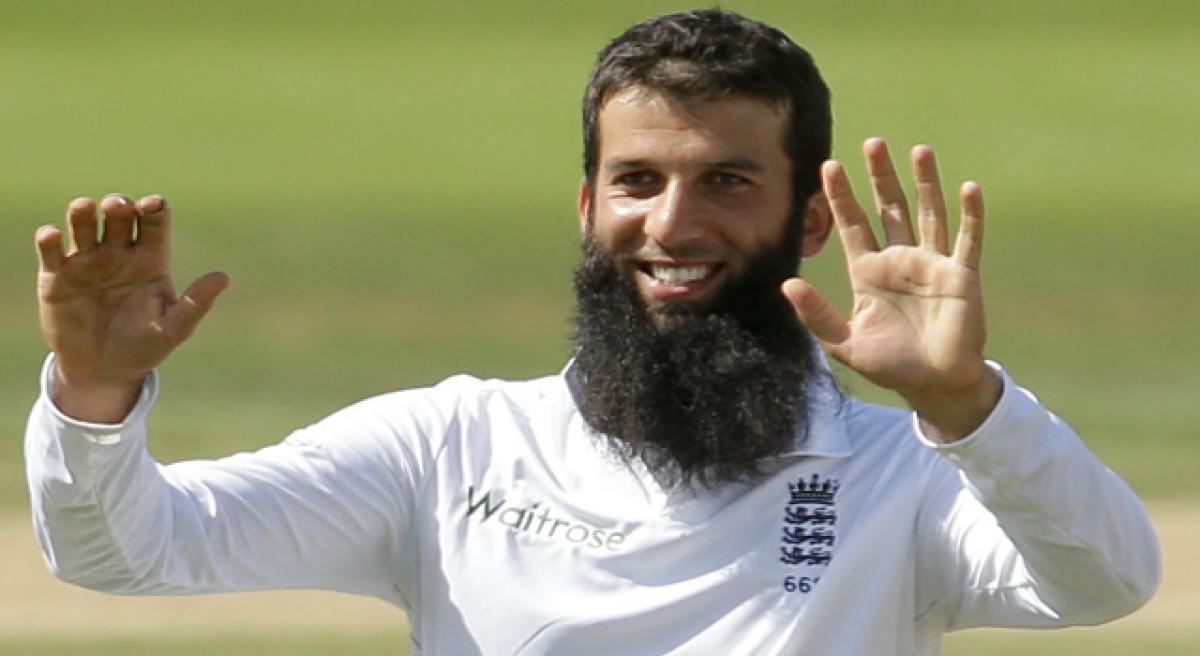Live
- “Farmers Trained on Castor Cultivation in Parvathapur and Chegunta”
- India and Pakistan extend validity of agreement on Sri Kartarpur Sahib Corridor
- Aha OTT Launches Trailer for Season 2 of Arthamainda Arun Kumar
- Singapore Defence Minister meets President Murmu; holds key meeting with Indian counterpart Rajnath Singh
- Sultan of Johor Cup: Unbeaten India outclass hosts Malaysia 4-2
- Priests strongly object to handing over temples to private entities
- Supreme Court reserves verdict in pleas against striking down of UP Madarsa Act
- Make optimal, responsible use of AI in govt working: Jitendra Singh
- Karnataka BJP seeks disqualification of Congress MP over violation of MCC during bypolls
- Bomb threat: IndiGo Airlines with 183 passengers make emergency landing at Jaipur airport
Just In

When he completed his hat-trick by trapping South Africa\'s Morne Morkel leg before wicket in the third Test match at the Oval with his orthodox off-spin, Moeen Ali entered the record books on three counts.
When he completed his hat-trick by trapping South Africa's Morne Morkel leg before wicket in the third Test match at the Oval with his orthodox off-spin, Moeen Ali entered the record books on three counts.
This was the first hat-trick in history at Surrey's famous cricket ground. The hat-trick also gave England victory, a record-breaking coincidence. Also, Moeen is the first cricketer of South Asia origin to have posted such a record -- at least since the princely order faded out. Not since Ranji, Duleep Singh ji and the Nawab of Pataudi has a sub-continental cricketer inserted himself in British history books.
Asked if he would ever play cricket in India, Ranji is reported to have grandly asserted: "Duleep and I are English cricketers." For that classy disdain, Ranji Trophy cricket was instituted in India in 1934. The year Ranji died, 1933, was, by a coincidence, historic for Indian cricket in another way: The first Test match was played at the Bombay Gymkhana. CK Nayudu captained India. The English captain happened to be DR Jardine, notorious for his Bodyline series against Bradman's Australia.
Scouts scoured the British Isles for the finest spot for angling, which was to be Ranji's next hobby. Ranji, the very "English" cricketer, had a very Indian sister he was fond of. In the male dominated feudal world, she had to be accommodated within hailing distance. Negotiations were started with a convent in the vicinity.
The convent would receive endowments. Ranji's sister would live with the nuns with two non-negotiable conditions: She would not be converted and she would wear a sari, not a habit. To this day Ballynahinch has a photograph of Ranji's sister in the convent, wearing a white sari, rather like Mother Teresa's Sisters of Charity.
Had I not strayed into the Ranji saga, the narrative after the Moeen Ali performance would have been the obvious one: A few months ago there were as many as four Muslims in the English cricket team -- Moeen, Adil Rashid, Haseeb Hameed and Zafar Ansari. Why is there no Hindu in the list? Lest I be misunderstood, my curiosity is mostly sociological. My guess is that Hindus overseas involve themselves in matters more serious than cricket.
The phenomenon continues in other cricket playing countries -- Usman Khawaja in Australia; Hashim Amla and Imran Tahir in South Africa; Sikandar Raza who helped Zimbabwe beat Sri Lanka. Most of these players do not lend themselves to significant sociological analysis. They are immigrants from Pakistan. Hashim Amla is the only one who reflects South Africa's social hierarchies going back to Mahatma Gandhi's 21 years in that country.
An overwhelming majority of Indians in South Africa, mostly around Durban, are children of indentured labourers, a device colonialism invented to circumvent the abolition of slavery. This class, along with the blacks, was too depressed to be playing a "gentleman's" game. But a wave of Muslim Gujarati Merchants, who turned up to cater to the British and Indian clients, were financially sound. One of them was Baba Abdullah, who invited Gandhi to be his barrister.
It is the progeny of these Muslim merchants from Gujarat who developed a taste for Marxism, as well as cricket, later in British universities. Yusuf Dadoo, Ahmed Kathrada, Essop Pahad, Kamal Asmal, Dullah Omar, Ahmed and Yusuf Cachalia, Fatima Meer -- they formed the backbone of the ANC resistance against apartheid.
Once apartheid was lifted, their children joined the all-white Rand club in Johannesburg and sundry cricket clubs. That is the kind of background Hashim Amla would come from. How does one explain the fine off-spinner, Keshav Maharaj, to my knowledge the first Hindu in the South African team currently touring England? West Indian cricket, uninhibited by the class stratifications of South Africa, gave full vent to a mixture of slavery and indenture to produce the world's most scintillating cricketers.
Of Indian origin were brilliant batsmen like Rohan Kanhai, Shivnaraine Chanderpaul and Ramnaresh Sarwan -- all from Guyana. It has remained something of a puzzle why Fiji, most loyal to be British crown, never took to cricket in a big way. (Saeed Naqvi is a commentator on political and diplomatic affairs)
By Saeed Naqvi

© 2024 Hyderabad Media House Limited/The Hans India. All rights reserved. Powered by hocalwire.com







